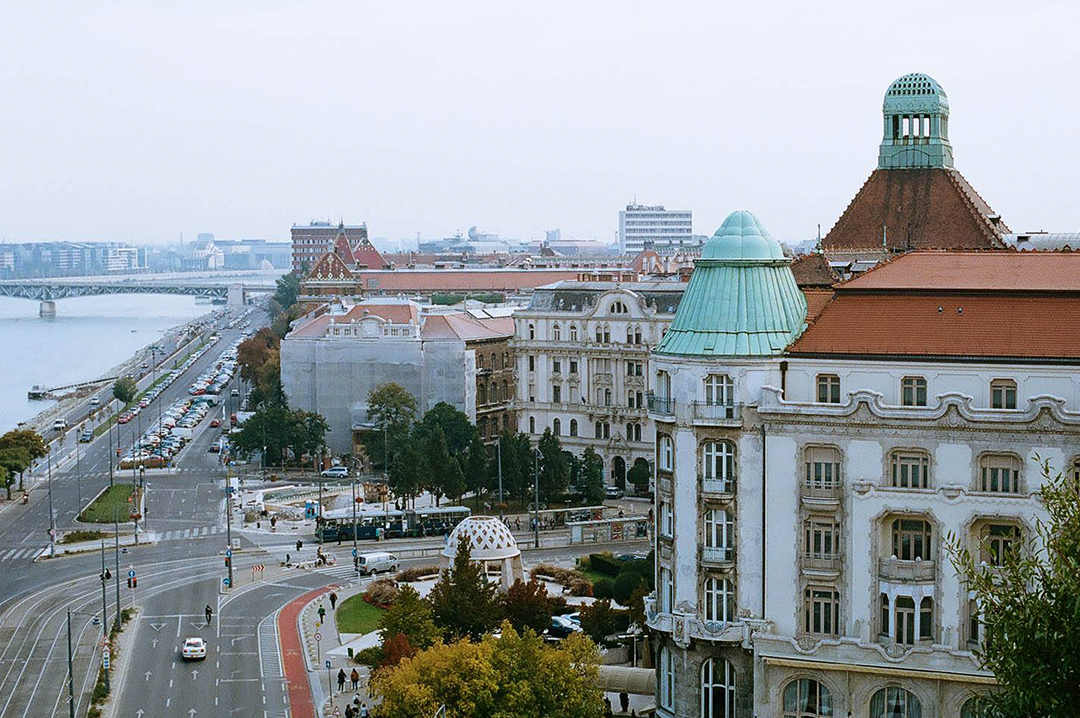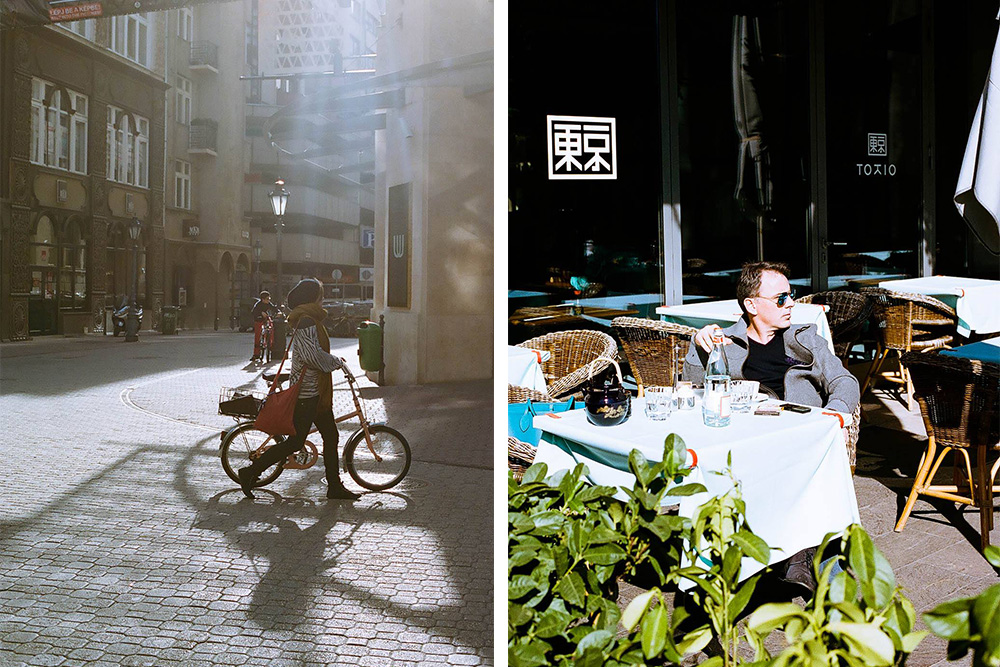International Travel
Entry is not allowed without a special reason.
Entry requirements. Regardless of the passenger’s citizenship, the restrictions do not apply to travellers:
- recovered from COVID-19 in the last 6 months from the date of entry;
- holding a Hungarian immunity certificate and their accompanying minor children (only if they travel together);
- holding an immunity certificate that is recognised by Hungary.
Travellers fulfilling one of the above mentioned criteria do not need any permission, nor prior PCR tests in order to enter Hungary, they do not need to go into isolation, and their length of stay is not limited.
Mandatory isolation isn’t required, but for categories that do not meet the above measures, 10 days.
Those who can prove with either a Hungarian or English language document that they have recovered from COVID-19 in the past 6 months can enter Hungary without restrictions.

Do you want to get in a swanky bourgeois mood? You need to head for Budapest. Here it is – the embodiment of grandiloquence, which today serves the god of tourism.
Budapest is divided into two halves: Buda and Pest – lovers with totally different characters that stand each side of the Danube and “hold hands” with their bridges. On one bank you have Buda, the ceremonial part of Budapest, measured and aristocratic. It demonstrates imperial ambitions presented in the form of pompous architectural constants: the Royal Palace, Matthias Church, the ‘snow Disneyland’ of the Fisherman’s Bastion (playfulness, but also ambitious).
But on the other, eastern bank, you have Pest. And if Buda has historically played the role of residence of the royal suite, then Pest was the city of merchants that was then enlivened by artists and artisans, doctors and workers. It’s Pest where we are going to take a walk – it’s still poorly known to tourists even today.
Courtyards: home-spun kingdoms
The first row in our guide takes us, of course, to the courtyards. And why? Because Budapest is a city of courtyards. Courtyards speak here with their own voice. And that voice resembles nothing else. You can find out if there is something interesting by looking through the little windows in the doors that separate the buildings from the streets. You can find lots of these windows, for example, in the historical district of Józsefváros. Once you lean your face towards the square or rectangle you will see amazing scenes from everyday life: some Uncle Vilmos is playing with a dog or some Aunty Brigitta is planting flowers, or perhaps a guy with a bicycle appears from behind the railings and heads towards you, and you smile at him with your eye and he smiles back with all of his face.

The courtyards of Budapest embody the city’s spirit, and are also a subtle way of making each of the city’s inhabitants feel like a king.
The courtyards, woven with greenery, with carved railings, are scattered throughout the city, but the most imperious ones are found on Andrássy Avenue: here you will find frescos and drinking fountains with dog’s heads, internal spaces resembling column halls or opera theaters turned inside out, in which you are looking at events in somebody else’s life from the stage. The courtyard is inside, so why do you need to create such pomp? Monumental columns, stucco, lace railings – this is all for the residents, who are kings here. The feeling of home has transformed in Budapest into a feeling of personal worth and has become the culture.
The best place to stay in Budapest if you want to discover its historical and cultural essence is the Danubius Hotel Gellért. It opened in 1918 and this kingdom of a hotel, which reminds you of the famous film by Wes Anderson, is located at the foot of Gellért Hill and also on the bank of the Danube, ten minutes’ walk to the city center. A Gypsy orchestra plays here in the evening, so after your tea you will hear live classical music. You can walk around the amazing premises in modern style, go out onto the terrace, and also head to the Gellért baths to feel your body being tickled by the same healing springs that once tickled the ancient Romans.
The culture code: soup is the vital sustenance
Where you have a kingdom you will find feasts. A Hungarian menu contains fatty, sweet and spicy food. “Virgin roast” from piglets, pörkölt, which is a beef stew with plentiful spices added, libamáj, which is basically foie gras, duck legs with stewed red cabbage, and for desert you can go for pancakes with rum or Esterházy, which is an almond and chocolate cake. You would think that wafer-thin girls wouldn’t survive here, but that’s not true, there are ways for them to relax as well – all sorts of spreads (garlic, paprika or curds), cheeses (for example, gomolya, or ‘cheese’ in Hungarian), and some combinations – körözött, a paste made of sheep’s cheese and various spices.

Behind the heavy doors of an old building you will find a hidden eatery, or else a ruin bar where a cloud of goulash hangs in the air.
From this variety of gastronomic cults, goulash of course stands out as the chief Statue of Liberty. Goulash means to go out to town, to eat, to drink. Goulash means to break off a piece of bread, to spread is with paprika, to take out a book from the class cupboard. Goulash means a whole way of perceiving the world, and in this sense, wherever you eat it, it will be more or less the same. The place where it got recognition is called the For Sale Pub on Vamhaz koerut 2. Visitors come here to eat the shepherd’s soup straight from the pot, or perhaps from the soup dish (Ft 1,490 / €4), to write on a sheet of paper how delicious it is, attach the paper to the ceiling, which consists entirely of such sheets of paper, and then drink a beer in candle-light and free up the chaos lover sitting inside them: to eat monkey nuts and throw the shells on the floor.
For Sale Pub, 4.2*, 2003 reviews.

The most fun mess in the social camp: the city is distinguished by its high level of neglect but also by its great vigour.
For many years, goulash was a dish for the poor – until it was served on the table of the kings. This is believed to have happened during the fight for Hungary’s independence in the 19th century. Then goulash was recognized as the country’s national dish, after which it became omnipresent. This is the state that we find it in today. Moreover, it precisely defines the local atmosphere – dense, yet simple and intimate. It’s hard to find yourself in Budapest without trying this soup. The entire surroundings, especially in the autumn, encourage you to go inside a warm building to escape the cold, unwrap your scarf, order a pot of this dense and filling mass, and feel like home.
How goulash is served
Goulash is served in huge deep dishes at a cost of Ft 900-1,500 (€2.50-4.00), or directly in the pot, to remind you that in times of shepherds it was cooked in simple conditions – right on a fire. As a complement to the goulash, it is sometimes served with bread and paprika spread. You spread the paste on the bread, bring it to your mouth, and in that time your other hand has already raised a spoonful of hot soup above the table. And so now they meet! Fanfare, a smile and bliss. And that’s it, now you can consider that your induction as a knight (or shepherd) of Budapest is complete.
Café Christine, 4.3*, 166 reviews.
La Mia Pizzéria és Étterem, 4.4*, 221 reviews.
Adria Cafe, 4.6*, 219 reviews.
Ruin pubs: trash as a work of art
Few people are capable of traveling to Budapest and yet avoiding visiting a ruin pub: this is a fascinating concept that began right here and gradually expanded across Europe. This is the idea: you take a decrepit building in which you open a creative underground with items found in junk stores (in other words, with trash that is presented as a new piece of art). Decrepitude, poverty, rags and springs sticking out from a toy horse will all be of use in this new world, according to the ruin bars which carried out this quiet revolution by allowing Cinderella to be happy in her old clothes.

Local lethargy resembles that of the French a little, yet it is quite unique, Budapest-style.
It’s best to try it twice: at night and during the daytime. It’s totally different during the day. To see it, you need to take a walk through the Jewish quarter Erzsébetváros. Some of the buildings are normally open, so you can go in and admire the art-trash in daylight.

The sometimes exuding ‘charming decrepitude’ reminds you that there is a place in life for everything: both joys and melancholy.
Take, for example, Doboz on Klauzál utca. 10. This place is well known for its drunken benders on several floors in a courtyard, in the middle of which somebody crawls along that reminds you of the beast from Beauty and the Beast. Opposite you will find romkocsma Extra, an eatery in the courtyard of a non-residential building, with a large number of red umbrellas hanging off the ceiling just like the roses in Beauty and the Beast. Here you can eat and also drink some wine (Ft 440-870 / €1.20-2.50 per glass) or an iced Spritz (Ft 1,590 / €4.50).
Extra, 4.2*, 499 reviews.
Doboz, 4.1*, 514 reviews.

People react to everything natural and don’t like pretentiousness. Authenticity is one of Budapest’s strong features.
If you reach building number 23 on this street then you will see people sitting there on an open square in such a touching and home-like place that you will simply want to hug them and shed a tear. This place is Klauzal café, which is certainly worth going straight in and where you should spend a little time in the company of Gundel pancakes with filling from cream, nuts, raisins and lemon peel with a dash of rum (Gundel was a naughty boy). Prices here are quite high, with this dessert costing Ft 1,500 / €4.20. The snacks menu also starts at that price, but the pleasure gained from spending time in that cafe totally erases any numbers from your mind. A pianist plays in the evening, somebody’s granddaughter Agnes watches from the wall, and on the table you will find napkins personally shaped as butterflies by Grandma Terez. Here it’s also pleasant during the day, when there is no pianist. It’s a family business and its owners are among the staff that serve in the establishment. You really feel being cared for – not at a distance but in reality: they will refold the napkin and bring flowers to the table.
Klauzál Café, 4.4*, 358 reviews.

The city is famous for its residents who are not tied by conventions. For example, somebody might resemble Sherlock Holmes delivering pies to an old lady who lives on the roof and likes to view the world through glasses with a monogram.
There’s also an interim version: a sort of pub, but highly decorated. We get to the parallel street Akacfa utca and there it is – Mazel Tov, thus named because its menu is mostly Middle-Eastern cuisine. This place, blessed by Dionysus, appears as a collection of angelic decorations on chairs lit by bulbs from above, while on the sides it is enlivened by a wall of ivy and bright brick walls telling you that everything is great, but not so much through annotations as much as through a lack of these annotations. This is a very clean ruin bar, you might even say that it’s not ruins at all, but rather a garden where neighbors meet and can discuss the news.
Mazel Tov, 4.4*, 2982 reviews.
Secret buildings: the Artists’ Club and Cuban courtyard all in one
It’s time to wander further, to the neighboring Kertesz Street. Here, at number 36, you will find a place that surprises you with each of its rooms. There are lots of them there, and all together they comprise the Fészek Artists’ Club, where at one time you could hear the roar of Bohemia, theatrical performances, operas, exhibitions and lectures were staged – and even today they are sometime held there. The Artists’ Club appears to be an ordinary old theater, until you go deeper inside along the carpeted path. All around you see stylishness, stained-glass windows, velvet, pillars, pictures, lamps in lampshades and busts of poets.

A powerful imperial history is hidden behind its external dilapidated look.
If you come here during the day, you might discover that nobody is here and yet the doors are wide open, inviting you in. You can wander among the halls, and take a look in the dressing rooms with stained-glass mirrors where clowns and actors once put on their face-paint. You can touch the ancient piano (the sound lingers for a long time or even accompanies you as you go on your way). In the Kellér Hall you will find places to talk to the paintings, while in the Dome Hall the acoustics are almost like in a church. There is also a coffee bar with annotated walls, a gallery, library and a hall full of cupboards for dishes.
Fészek Artists’ Club, 4.3*, 158 reviews.

This is a city that creates poetry. It creates poetry with its courtyards, theaters, bookshops and couples in love, who walk side by side and quote Endre Ady: “To waste myself in an embrace: this is what I so want.”
You descend the stairs to the ground floor, pass the shop sign La Bodeguita del Medio, go into the courtyard of this same building and find there… Cuba! And specifically, an architectural drinking portrait of Hemmingway, yet this is nothing other than a restaurant working as a franchise of the Cuban establishment of the same name, which the writer made famous with his presence. Mounted torches and chandeliers in the shape of shells, a fountain and a fish skeleton. In the inside bar you will find a case with old books, statues and a huge portrait of Old Hemmingway, with a beard and in a jumper, so nice-looking, where he slightly sneers and tells you, extending a mojito through the hands of that pleasant guy in the black apron “If you have stopped doing certain things simply for pleasure, then consider that you are not living.” Consider that this sentence symbolizes your entire trip.
La Bodeguita del Medio, 4.3*, 771 reviews.
Budapest is intimate. This city squeezes your cheeks with the Danube with all its strength. And it squeezes with its warm wind and courtyards with carved railings – it will squeeze against you and you will stand together like family. It’s a tramp city, but also a king city, it’s a poet city and a junk store city. It yanks open its coat and hugs you with all of its grandiose cultural inheritance. And that’s so good. So good.
The editors of ZenHotels thank Masha Kushnir for the provided photos.


